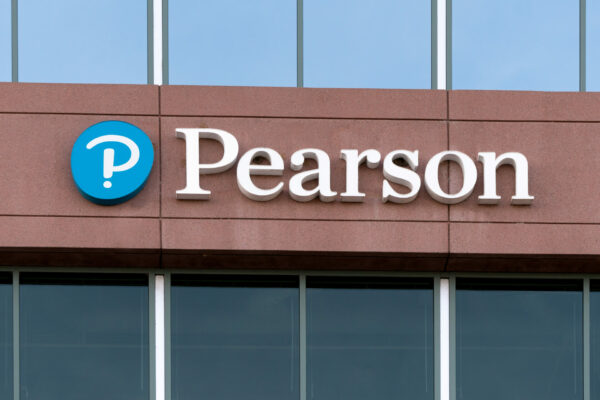Building a global learning culture is less about change and technology and more about establishing an effective framework in which to develop and sustain a culture that supports the business strategy.
by Site Staff
March 1, 2006
McKinsey research recently found that culture is even a greater driver of economic performance in today’s competitive business climate than it was when Harvard Business School identified the link more than a decade ago. According to The McKinsey Report, “Next Revolution in Interactions” (2005), organization stakeholders make decisions affecting business performance based on their own culture-specific values. With technology accelerating the speed of virtual stakeholder interactions, how can an organization with potentially multiple cultures meet customer demand for consistency and quality worldwide? Many successful companies give credit to building a global business culture in which learning is a core value and driver. Today’s chief learning officer is the natural sponsor for embedding learning into the business culture. Discussions with CLOs who are achieving some success with this strategy revealed that they have two things in common: a framework for building and sustaining a global learning culture and a change management strategy continuum that helps assess and sustain progress.
What Is a Global Culture?
“When people across the globe come together to think, talk and approach their work with a global mindset, then you know a global culture is at work,” said Microsoft’s Cedric Coco, general manager of engineering excellence. “A diversified learning framework threaded throughout an organization’s global operational structure, protocols and communications fosters cultural exchange and employees who think about the business needs globally, while acting locally.”
“We think of this more as a shared culture, rather than a global one,” said Mike Hamilton, chief learning and development officer for Ernst & Young. “Our multi-national clients require consistent, high-quality service anywhere we serve them on the globe. In order to meet this standard, our engagement teams are required to live by a set of shared values that guide their actions and behaviors — in the way they work and interact with colleagues, as well as the way they serve our clients. Consistent, quality performance depends on leveraging the best of all cultures and recognizing what aspects must be shared globally.”
Are You Ready?
There are two prerequisites for building a global learning culture. First, there must be a strategic business need. For example, if your organization has standardized business processes, methodologies and policies for its operating environment and lines of business, then consistency and quality across the enterprise is a strategic business requirement that could be best achieved with a global learning culture. Second, learning must be viewed as strategic to the business. That is, learning contributes to business results and is an integral part of the organization’s culture. Experiences have shown that it is difficult, if not impossible, to build a global learning culture without this level of business alignment. If these prerequisites are not in place, this is your starting point.
Framework for Building a Global Learning Global Culture
There are four common elements for building a global learning culture:
- A learning operating structure that’s integrated with the business.
- A set of protocols and standards that are aligned with the company’s needs.
- A communications program designed to build acceptance and sustain commitment.
- A cultural exchange program that increases buy-in, promotes understanding and shares best practices.
Learning Operating Structure and Governance
An effective operating structure will have learning integrated at all lines, functions and levels of the business. Its purpose is to provide operational leadership, guidance and coordination of learning activities across the global organization. The structure should enable the CLO to reinforce global mandates, as well as support local differences such as government regulations, business processes, career paths and competency requirements.
Three teams considered essential to the learning operating structure are learning, operations and management oversight. The global learning team is the core of the structure. This team is responsible for integrating global culture into the global learning strategy and for driving program initiatives. The learning operations committee approves actions proposed by the global learning team and helps to implement these actions at all levels (area, country and local). The learning oversight board, which provides strategic oversight of all learning operating teams, makes policy decisions affecting culture and learning, and ensures the learning culture is responding to and leading business change. The board also validates the roles, responsibilities, expected outcomes and measures of each operating team.
When deciding the makeup of these teams, consider what types of experiences, backgrounds and positions will enable each to deliver the required results. For example, the global learning team might also include professionals with HR, project management and operations experience. The learning operations committee should include learning directors representing each business unit, area and function. The learning oversight board should reflect the business operations with leaders from all business units, areas, markets and key functions.
Regardless of the structure you develop, including broad representation on these three teams will improve your success rate by demonstrating leadership’s commitment, ensuring the work is aligned with the business and increasing cross-cultural buy-in.
Learning Operating Protocols
The foundation of any global learning strategy is a well-defined set of operating protocols that ensures learning is supporting the business strategy. When Coco was asked why protocols are critical for building a shared culture, he replied, “Most people want to do a good job, but too often poor processes, tools and standards cause people to do the wrong thing. Operating protocols enable people to use good judgment and make decisions with confidence. When protocols don’t exist or are unclear, people naturally become territorial, which means their local culture will influence decisions affecting your business worldwide.”
The more decentralized your learning environment, the more important it is to develop protocols designed to deliver high-quality customer service consistently.
Protocols should support every element of the learning strategy from roles, responsibilities and reporting relationships to content development, tracking, reporting and measurement. One often-overlooked area is vendor relationships, where guidelines on selection, management, contract negotiations and local versus global considerations can significantly improve consistency, quality and costs.
When developing your learning protocols, the first consideration is how each supports the global business strategy. Principles used to help determine appropriate protocols include:
Leverage stakeholder relationships: As the provider of customer-focused consulting services, your team has considerable knowledge about your organization’s business and learning needs. Tap into this knowledge to develop a baseline, then bring in the cross-border and cross-business representatives to develop the protocols fully. Before implementing protocols, run a pilot and refine as required. Once implemented, leverage your relationships to continually assess adherence and address deviations quickly.
Cross-border collaboration: Involving learning teams and customer groups in the development of the protocols will increase buy-in across the organization, as well as identify poor processes that could interfere with adherence. Microsoft found focus groups to be a good collaboration vehicle. The learning team conducted focus groups with their engineering customers to test concepts, obtain feedback on current protocols and identify best practices. By sharing the results across the organization, the learning team encouraged additional collaboration among other customer groups.
Identify mandates and flexible areas: Clearly define which elements must be adhered to across the organization and when local discretion is allowed. While some people may be concerned that protocols will come across as too controlling, experience suggests that understanding the rules produces better results than when rules are fuzzy. People will make decisions faster and better when protocols directly support the business, are designed to make sense and the philosophy is understood.
Transparent application: People are more likely to accept protocols when they know they are being applied the same worldwide. People learn this best not from headquarter edicts, but from the performance of their peers. Exceptions can quickly undermine the global learning strategy now that technology allows people across the organization to “witness” deviations.
Communications and Cultural Exchange
Building a global learning culture is a change initiative that, according to John Kotter, an expert on leadership at the Harvard Business School, requires that you use as many communications avenues as possible. Technology is an obvious avenue as it allows you to deliver consistent messages through newsletters, webcasting, community Web sites and other innovative means. However, experience has shown that when building and sustaining a shared learning culture, there is no substitute for personal interactions, such as:
Voice-to-voice communications: Virtual communications can mask cultural and language differences. Speaking directly with someone on a regular basis helps you hear how well that person understands, how phrases are interpreted and the unspoken question. Cultural differences are often addressed before they become issues.
Shared learning and work experiences: Real-time interactions help improve teamwork, creative problem-solving and sharing best practices. Microsoft schedules learning team workshops alongside customer group training sessions to foster mutual understanding of the learning and business cultures. Ernst & Young sends a subset of the central learning team to work on location in a new country. The team’s first goal is to hire replacements and quickly make the local team self sustaining. Later, a local team subset works on location in headquarters to continue the two-way business and culture sharing.
Local SME commitment to global initiatives: The cross-pollination of business and cultural practices is an essential element of a global learning culture framework. Ernst & Young established a management-endorsed program that committed local subject-matter experts (SMEs) to develop a global content library. Working side-by-side with the central learning team, SMEs helped leverage relevant local content for global use and addressed global and local cultural requirements. “Management soon realized that the benefits far outweighed the cost of taking the best people off the front line for several months,” Hamilton said. “The content was readily accepted because it wasn’t viewed as solely U.S.-funded and -produced. An added benefit was the marked increase in ‘local’ ownership for global content management and maintenance.”
Where Are You on the Global Learning Culture Continuum?
The global learning culture continuum can help you assess your organization’s progress toward building and sustaining a global learning culture. Building a global learning culture starts with a driving business need, such as quality, people or growth strategies, and the recognition that learning is strategic to the business. If you are at this starting point, the continuum can be used to develop the business case for a global learning culture. Learning directors further along the continuum can use it to assess progress and refine their programs. For example:
If an effective operating structure with supporting operating protocols is in place, but consistency and quality continue to be problematic, protocol adoption might be working at provincial levels but not globally. Analysis might show that the involvement of local SMEs was insufficient to address global or local differences or that the local contribution was not communicated effectively.
If the operating structure is in place and the communications and exchange programs are under way but protocols have not been implemented, people won’t know what is expected of them. Providing the ‘playbook’ allows people to feel confident they are doing their jobs well and reduce resistance to change.
If you are experiencing some successes but adoption of the program is waning, consider strengthening the exchange program to reinforce local involvement at the global level. Work with the operating structure teams as well to reinforce the need for everyone to walk the talk. Also, look for underlying issues such as technology and content. Integrated technologies and global learning content are required enablers of all global learning cultures.
The demand for consistent organizational performance worldwide will continue to grow in response to the expansion of global markets. The timing couldn’t be better for CLOs to demonstrate how critical a global learning culture is to delivering the required performance.
Brenda Wisniewski is a learning and performance executive who provides consulting services to businesses and higher education. Thomas Laubenthal is the senior vice president of Intellinex and global account leader for Ernst & Young. They can be reached at editor@CLOMedia.com.



